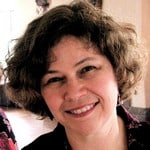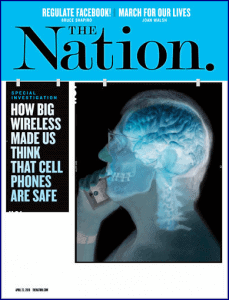Don’t Believe Big Wireless on Phone Safety
MARNE GLASER

A lot has happened this year in the world of wireless health research.
In late March 2018, a panel of experts reviewed the largest animal study of its kind on cell phone radiation effects. The study had been requested by the FDA back in the late 90’s, financed by the US Government, and finally conducted by the National Institutes of Health.
The experts concluded that the study showed “clear evidence” of carcinogenicity in male rats exposed to cell phone radiation. Increases in the female rats did not reach a level of significance. These were primarily cancers of the Schwann cells in the heart. There was also “some evidence” of brain tumors involving glial cells. Both these types of cells insulate nerves.
Concern was especially raised because cell phone studies on humans have found increased cancers in the head involving both Schwann and glial cells. In the same month, the Ramazzini Institute, a prominent research center in Italy, reported similar results in their animal study.
The National Toxicology Program study is considered a game changer on the question of cell phone and wireless safety. Don’t wait for the wireless industry to admit it.
If you want to read up on this study and topic you can go to ehtrust.org or saferemr.com.
A special investigation compares the wireless industry to big tobacco
In late April 2018, journalists at The Nation magazine published a report called “How Big Wireless Made Us Think That Cell Phones Are Safe: A Special Investigation.” I recommend this article to you. Based on my 17 years involvement in this issue, I can vouch for its accuracy.
Here’s a quote from the article:
“Like their tobacco and fossil-fuel brethren, wireless executives have chosen not to publicize what their own scientists have said about the risks of their products. On the contrary, the industry—in America, Europe, and Asia—has spent untold millions of dollars in the past 25 years proclaiming that science is on its side, that the critics are quacks, and that consumers have nothing to fear.”
Report co-author Mark Hertsgaard has been speaking about his investigation on the radio, NPR’s “On Point”, and KALW’s “Your Call.” These will tell you a lot that you are not hearing elsewhere:
The first radio show with Mark also includes researchers Joel Moskowitz and Jerry Philips.
The second radio show includes epidemiologist Devra Davis.
Steps you can take
There’s much evidence already on a variety of bioeffects advising us to take reasonable and easy precautions. See my previous article on ways to lessen exposure:
18 Simple Ways to Limit Wireless Exposure










